What Makes Martin's SC-13E So Revolutionary?
With its advanced asymmetrical body shape, Martin’s new Sure Align® neck system and low-profile velocity neck barrel - just for starters - it’s no surprise that the SC-13E acoustic-electric guitar has been hailed by critics as the acoustic that’s so comfortable and fast, it plays like an electric and sounds amazing even at full volume. What’s even better? Martin introduced this amazing guitar at a price point accessible to any working musician or even someone just starting out.
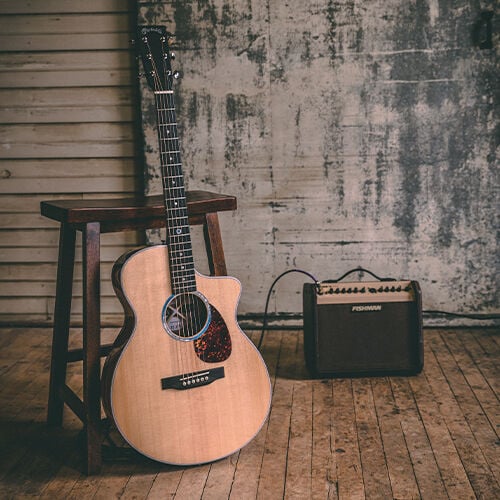
Let’s take a look some of the unique design choices that the Martin product team made to bring this model to life and why the SC-13E is considered so revolutionary across the guitar industry.
1) The Asymmetrical Shape
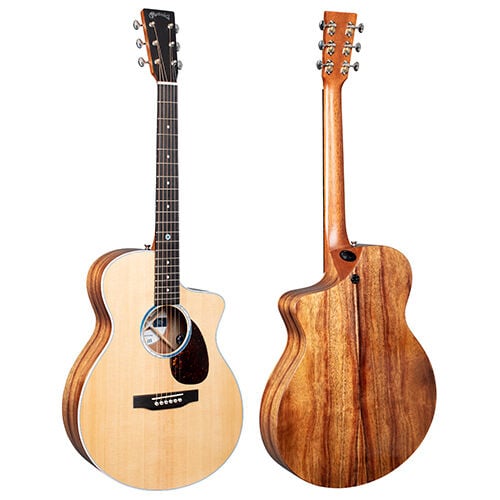
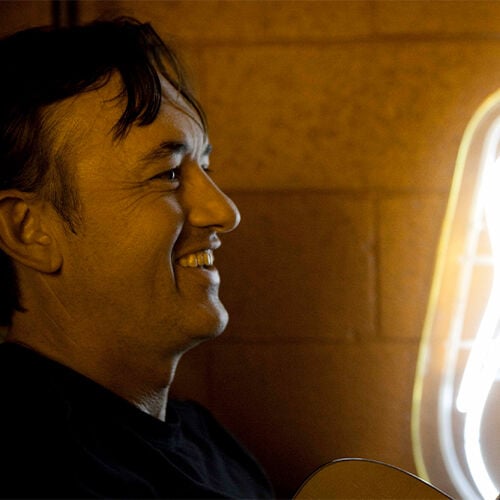
Fred Greene, Martin’s Vice President of Product Management, wanted an asymmetrical production model for some time. Under Fred’s direction, the product development team explored fresh concepts and back-burner experiments that had simmered in the R&D department for years before arriving at the exciting final version released to the general public in 2020.
What are the benefits of an asymmetrical body shape?
- Comfort: The new shape offers comfortable contours, which are unique from all other Martin body sizes or anyone else’s body sizes for that matter. It feels right at home in the lap, resting on either knee. And it’s superbly suited for playing standing up, with a strap button installed on the bass-side shoulder, so the hand remains unhindered in the upper frets.
- Balance: With the new neck system (you’ll read about that soon), the neck joint had to be shifted down so the asymmetrical silhouette compensates by shifting the bass side toward the neck and the treble side toward the lower bout. This means less of the sound chamber’s cubic volume is eliminated by the cutaway. The overall result is a completely balanced sound whether the guitar is plugged in or played acoustically.
2) The New Bracing Pattern
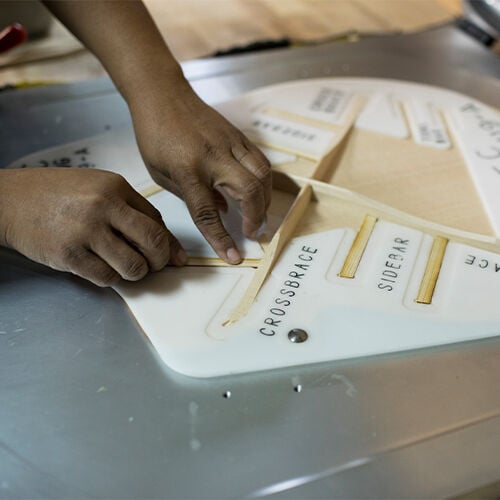
To get the most out of this new sound chamber, the design team reconfigured the classic X-bracing devised by C. F. Martin Sr. in the 1840s. The result is the innovative Tone Tension bracing, with enhancements that include an X scalloped on the treble side for resonance and tapered on the bass side to increase low-frequency response. This ensures the bass E string is never overwhelmed by the other wound strings. They all sound with identical volume and projection. Another guitar may not exist that has such perfect string-to-string balance.
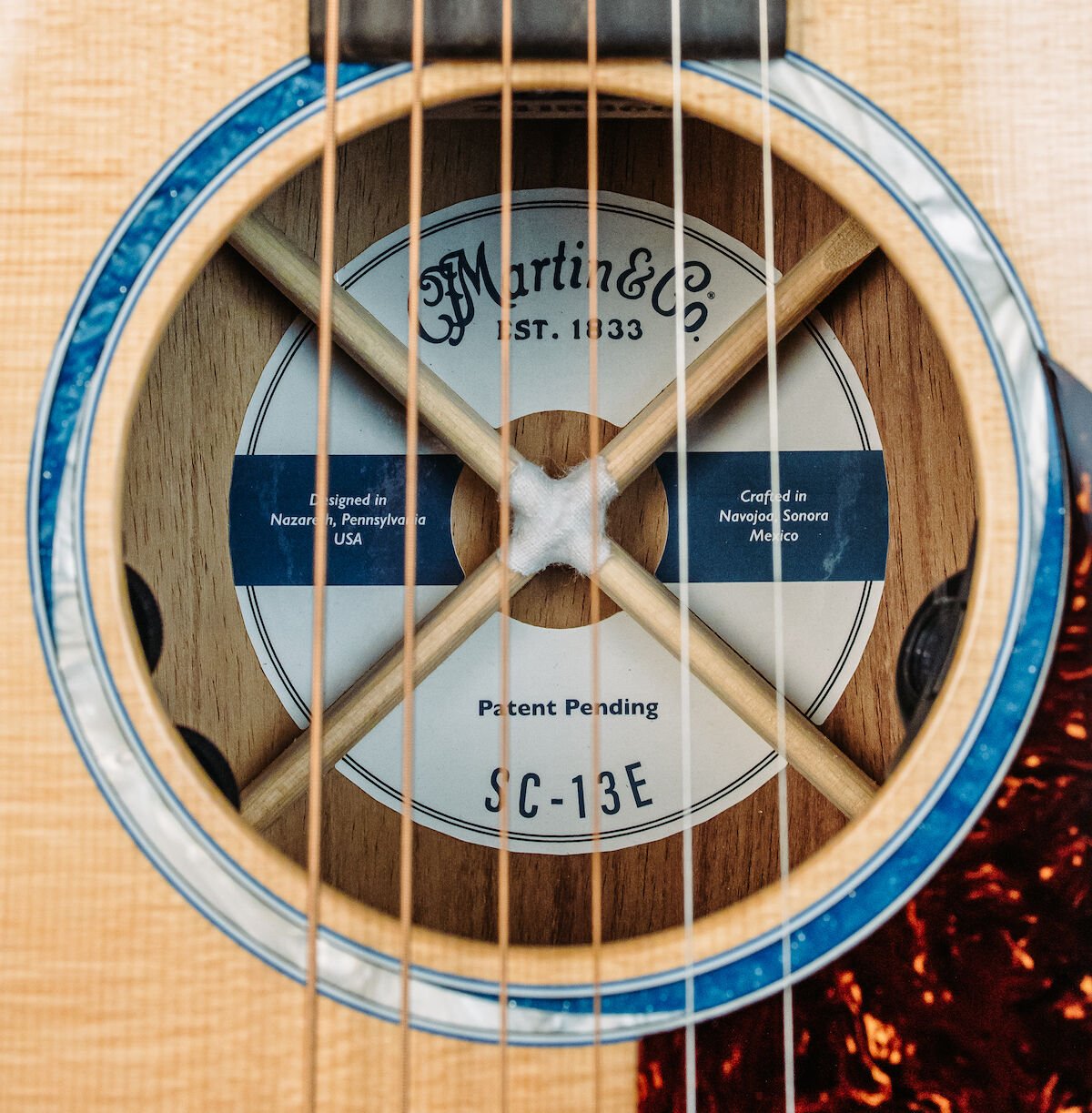
It even has a second X brace to support the back, visible through the soundhole—one of the many Martin firsts on the incomparable SC-13E.
3) The Name

The asymmetrical shape reminded the design team of an “S”, thus the name - SC-13E. This model brings about a new body style for Martin, the first in decades. And for the first time in Martin model history, the S signifies the actual body shape, rather than its size, as in D for Dreadnought, or J for Jumbo.
Tim Teel, Director of Instrument Design, said the naming was as simple as noticing the S apparent in the fluid curves he kept sketching during early brainstorming. As he put it, “In the end, I feel the S stands for whatever the player decides it stands for, on a personal level. Maybe it will stand for Stage, or Studio, or Stadium, or Solo, or Sexy, or Shredder. It is such a versatile musical instrument; it will earn every one of those designations, and more.”
4) the New Neck Joint - "Look Ma, No Heel!"
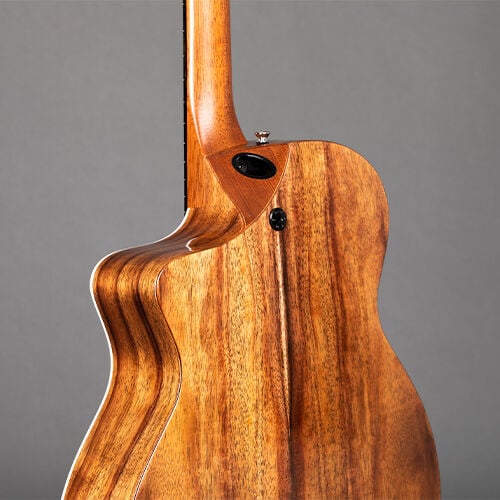
The neck is attached to the body by the patented Sure Align® system, which is a noteworthy departure for Martin. The internal wooden neck block is meticulously sculpted from solid African sipo to accommodate a two-way adjustable truss rod and the components of Martin’s new linear dovetail neck joint, currently exclusive to the SC-13E. This is not a bolt-on neck, folks. Martin doesn’t do bolt on necks.
Where the shoulders meet the neck, the conventional obstacle of a heel is replaced by a radical concave scoop, granting unfettered access to the entire fretboard. It’s like having an electric guitar neck that actually works on an acoustic guitar - a holy grail for many musicians.
5) The New Neck Barrel

The neck profile was inspired by the incredibly comfortable V profile neck on the priceless 1930 OM-45 Deluxe that lives in the Martin Museum. The designers took that profile and skewed it, so the apex drifts off- center, keeping it in the nook of the cupped hand as it advances up the frets. It has the comfort of Martin’s popular low profile neck barrel, yet it has its own distinctive skewing.
Tim Teel named it the “Low Profile Velocity” and described it as “an asymmetrical barrel that twists in a helical manner to move ergonomically with your hand in all playing positions.” From the 1st fret to the 13th fret, the Low-Profile Velocity neck remains an absolute joy to hold.
To sum up, Martin has built an acoustic-electric guitar that sets you free. You can now play all the way up the neck. All 13 frets - with no restrictions. The SC-13E is a super comfortable, super playable acoustic-electric that removes the limits of a traditional acoustic guitar and opens the door to new musical possibilities.
To learn more about how Martin developed the SC-13E watch the origin story video here.
Read a full review of the SC-13E here in the Martin Journal of Acoustic Guitars.
Ready to shop? Click here.
Other Martin Guitar Resources: